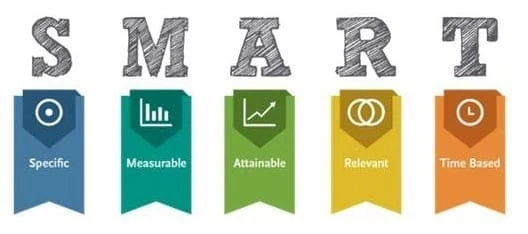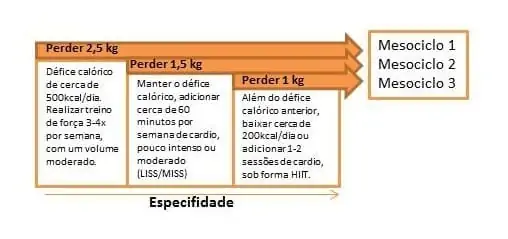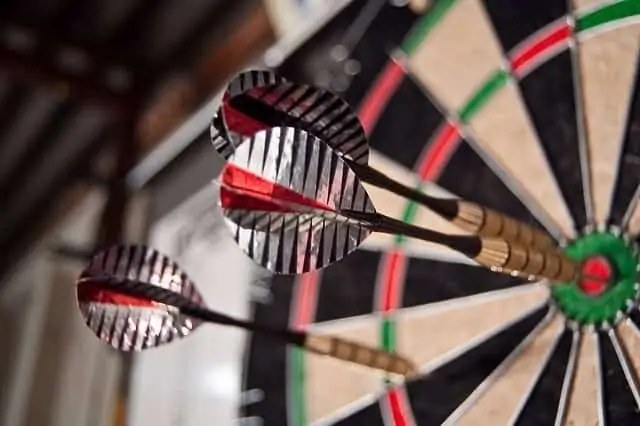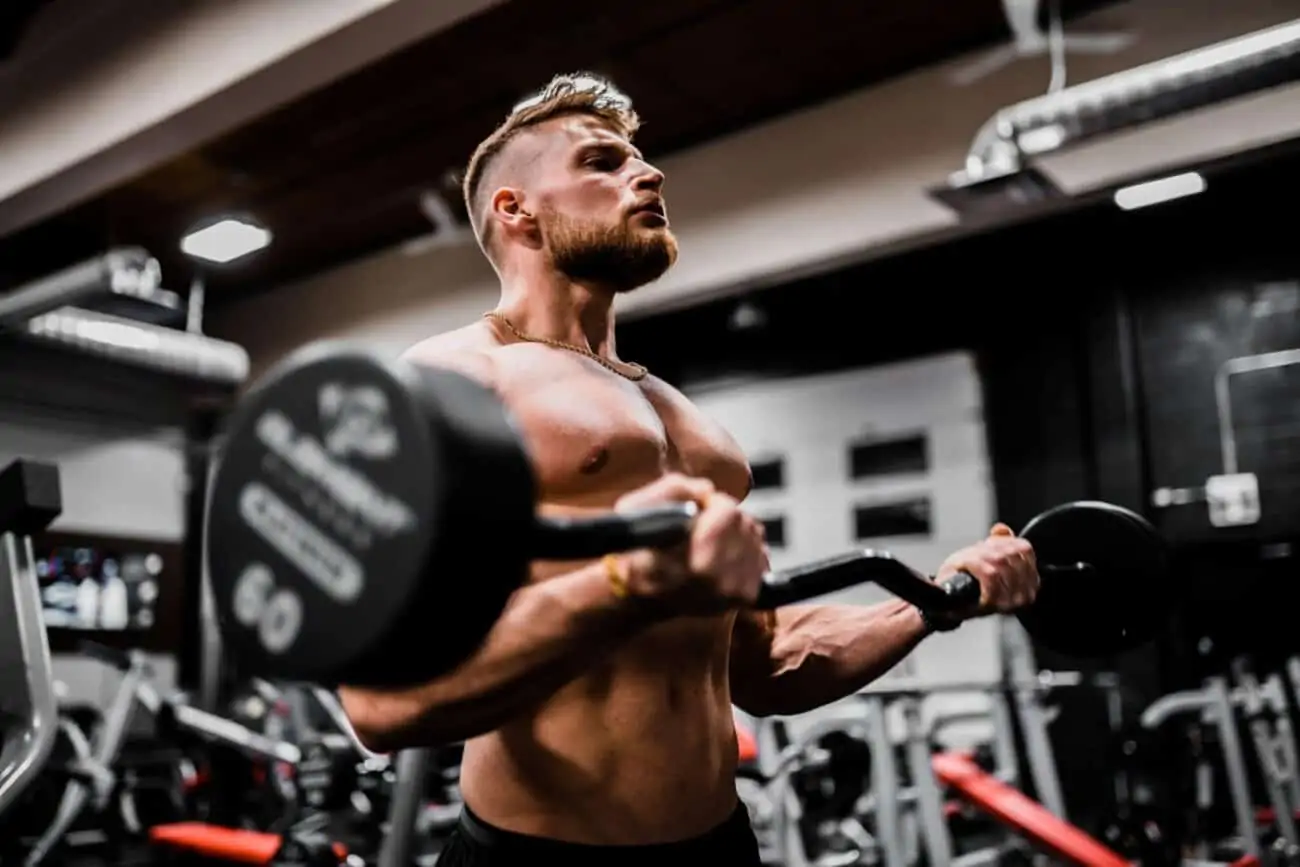Who has never started the year with new promises and new plans to fulfill? As the saying goes, new year, new life!
It's completely normal for us to start the year with new goals.
However, before we start applying everything in the wrong way, the idea of this article is to teach us how to become more responsible and to have some metrics that help us evaluate the goals we set out to achieve.
Of the most common objectives that come to me, I highlight the following:
- Want to lose 5 kg of body weight
- Wanting to learn how to count macros and calories
- Wanting to improve my cardiovascular capacity
- Want bigger arms
Now, how can we transform goals into training goals?
- I want to lose 5 kg = I will add a calorie deficit to my diet and possibly add some cardiovascular training.
- I want bigger arms = it probably makes sense to prioritize arm training and training volume.
One of the best-known ways of defining objectives, in the most diverse areas of work, is through the SMART methodology.
SMART is the acronym for ?Specific, Measurable, Attainable, Realistic, and Time-Sensitive?, which in Portuguese means:
Specific ? Specify that I want to have bigger arms instead of saying “I want to get bigger”, so that it is easier for us to work and focus towards the specific goal.
The same applies when you want to lose fat, or maintain, or even gain some muscle mass, instead of saying “I want to get Fit”.
Measurable ? For example, saying “I want to gain 2 cm in my arms”, instead of saying “I want bigger arms”, or saying “I want to lose 5 kg” instead of just saying “I want to lose weight”.
What is actually measurable is controllable.
Attainable ? For example, when you want to “gain 2 cm in your arms in the next 12 weeks”, or when you want to “lose 5 kg in the next 12 weeks”. All of this is feasible if the work is oriented in this direction.
On the other hand, if you want to gain 2 cm in your arms in 2 weeks, or lose 20 kg in 6 weeks, these goals will no longer be as achievable.
Realist – Very similar to the previous point.
Sensitive to temporal space ? These are goals without a date that usually become less demanding and people tend not to meet them. Using Parkinson's Law: ?work expands to fill the time available for its completion?.
In this sense, it becomes essential to force a temporal space.
Taking the example used previously, you should aim to “want to lose 5kg in the next 12 weeks”, instead of aiming to “lose 5 kg sometime this year”.
After understanding how to define our objectives in detail, we must prioritize them and, consequently, detail them into sub-blocks.
Using the previous example? “I want to lose 5 kg in 12 weeks”, you can break it down as follows:
- Lose 2.5 kg in the first 4 weeks
- Lose 1.5 kg between weeks 5 and 8
- Lose 1 kg between weeks 9 and 12
Your training and your diet will certainly be complementary.
Although the example focuses on diet planning and weight loss progress, what should you do about the rest?
It will definitely make sense to have something adjusted. However, it is important to try not to plan objectives and goals that end at the same time and that could interfere with each other.
For example, avoid thinking that “I want to lose 5 kg, gain 10 kg of muscle mass, increase my squats by 50 kg and run 2 half marathons”.
If so, what training should you do?
In our example we must bear in mind the following:
- Representing our maximum strength requires hypertrophy, technique and neurological adaptations
- Hypertrophy is efficiently achieved mostly in the total training volume
- Neurological adaptations are mainly due to intensity (%1RM)
The training volume and intensity are ?almost? inversely proportional, so you need to be careful and avoid the well-known “overtraining”.
You have to find a balance and try to progress through progressive overload over time.
Below, I present you a guide that can serve as an example of how you can prepare a training adapted to you, based on the following aspects:
Volume – Between 40 and 70 repetitions per muscle group in a training session, or 80-210 repetitions per muscle group in a week.
It will make sense to start with the lower rep limit and work your way up as close to the upper limit as possible during the first month, while you have the initial calorie deficit and still have some acceptable energy levels to complete the workout.
Throughout the following workouts, you can slightly reduce the volume, focusing on trying to maintain the intensity.
Intensity: In our example for hypertrophy and strength, during the weight loss process, we should focus most of our time training in the 6-12 repetition range (about 2/3 of the volume), with the remaining volume divided by repetitions low (<6) and higher repetitions (>12).
Frequency. Each muscle group should be trained 2-3x per week.
*Based on recommendations by Eric Helms.
Another aspect to take into consideration is the importance of focusing on doing some cardio and a lot of muscle training, which leads to an increase in G Flow (G-Flux).
There are many studies that prove that during a weight loss phase, spending 200 extra calories per day and having a food deficit of 300 calories will have a greater effect on body composition than a food deficit of 500 calories, without extra energy expenditure.
In short, after this long text, you can ask yourself the following questions:
- What's the point?
- What methods are currently being used to achieve this goal?
- How fast am I progressing towards the goal? (e.g. weight lost per week)
- What could benefit and optimize the process? (more hours of rest, better nutrition, etc.)
- How will I assess that something is actually improving effectiveness during the process?
- How long is acceptable before noticeable changes are seen? (typically somewhere between 4-16 weeks to be sufficiently visible and measurable)
- At the end of the applied time? Did it go as expected? Did it go better or worse than expected? It's because?
If you are satisfied with the results, then keep what you have been doing.
If something went less than expected, you have to start over from point 1 and apply the lessons learned during the process.
Rational thinking takes time to be internalized, but by becoming responsible, rational and objective in our analyses, we can learn from everything we do.
For more details on the subject, we are available on Facebook.
It's the beginning of the year, a great time to set goals and follow them until the end!
Article written by Team Sik Nutrition
[author image=”https://ginasiovirtual.com/wp-content/uploads/2016/01/logo-sik.jpg” ]Team Sik Nutrition is a recent group of people passionate about the world of Fitness. The Team's focus is to guide, educate and motivate those interested in achieving their health and fitness/performance goals. All this sharing is based on scientific facts and the experience of Team members.
The CEO of Team Sik Nutrition is João Gonçalves. Amateur powerlifter, passionate about Fitness and writing articles.
Facebook Team Sik Nutrition[/author]







